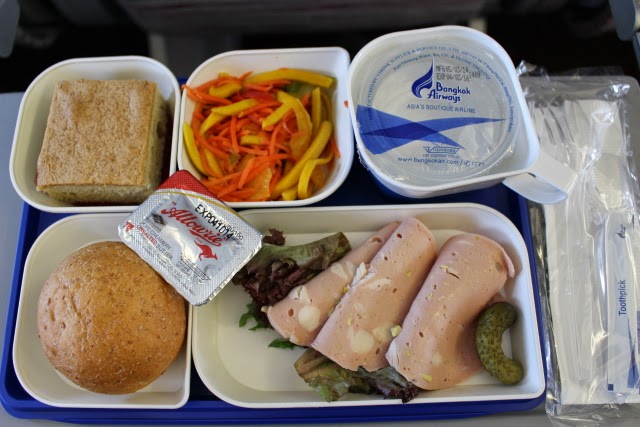On June 30th, Japan Airlines (JL/JAL) announced that July 23rd would be the launch date for their domestic in-flight Wi-Fi product dubbed JAL SKY Wi-Fi. Initial routes that will see the service are from Tokyo/Haneda (HND/RJTT) to Fukuoka (FUK/RJFF), Hakodate (HKD/RJCH), and Osaka/Itami (ITM/RJOO), with selected flights offering the service. JAL thus becomes the first Japanese airline to offer domestic in-flight internet connectivity.
Aircraft that offer Wi-Fi are those that have been refurbished with JAL's Sky Next new domestic interiors (JAL's first Sky Next 777 enters service.) with all-new leather seats and carpets, plus Dreamliner-style LED mood lighting. Partnering with U.S.A.-based Gogo, which will provide satellite connection, passengers will be able to use their smartphones, tablets, or laptop computers to surf the internet, check e-mail, or update their social networking services (SNS) pages like Facebook or Twitter.
Two payment plans will be available; one offering 30 minutes use at 400 JPY, while the other offers unlimited access with price depending on the type of the mobile device and the length of the flight. Fees are set at 500 JPY for all gadgets on flights less than 450 miles (e.g. Tokyo – Osaka), 500 JPY for smartphones and 700 JPY for tablets/laptops on flights between 451 and 650 miles (e.g. Tokyo – Fukuoka), and 700 JPY for smartphones and 1,200 JPY for tablets/laptops for flights over 651 miles (e.g. Tokyo – Okinawa).
Payment must be made by a credit card upon establishing a connection. However, those who are unwilling to pay will still have access to JAL's complimentary in-flight Wi-Fi program, including daily news, travel tips, and sightseeing information about the destination.
The number of access points will vary depending on the aircraft, with Boeing 777s getting six while 737s receiving three, but it will be accessible from anywhere on the aircraft. Specifications for the wireless LAN network are IEEE802.11a/b/g/n. Current plans call for four 777-300s, 12 777-200s, 20 767-300/300ERs, and 41 737-800s to have completed the revamp to JAL Sky Next by mid-2016. Sapporo/New Chitose (CTS/RJCC) is expected to be the next city to receive the service in August.
Reference: Japan Airlines, June 30th. (in Japanese)
Reference: Aviation Wire, June 30th. (in Japanese)
 |
| Boeing 777-289 JA007D with JAL Sky Next decals prepares for departure from Fukuoka. It became the first aircraft to receive the new interior. (Photo: Aviation Wire) |
Aircraft that offer Wi-Fi are those that have been refurbished with JAL's Sky Next new domestic interiors (JAL's first Sky Next 777 enters service.) with all-new leather seats and carpets, plus Dreamliner-style LED mood lighting. Partnering with U.S.A.-based Gogo, which will provide satellite connection, passengers will be able to use their smartphones, tablets, or laptop computers to surf the internet, check e-mail, or update their social networking services (SNS) pages like Facebook or Twitter.
Two payment plans will be available; one offering 30 minutes use at 400 JPY, while the other offers unlimited access with price depending on the type of the mobile device and the length of the flight. Fees are set at 500 JPY for all gadgets on flights less than 450 miles (e.g. Tokyo – Osaka), 500 JPY for smartphones and 700 JPY for tablets/laptops on flights between 451 and 650 miles (e.g. Tokyo – Fukuoka), and 700 JPY for smartphones and 1,200 JPY for tablets/laptops for flights over 651 miles (e.g. Tokyo – Okinawa).
 |
| Watch out for this logo when boarding and inside the aircraft. (Image: JAL) |
Payment must be made by a credit card upon establishing a connection. However, those who are unwilling to pay will still have access to JAL's complimentary in-flight Wi-Fi program, including daily news, travel tips, and sightseeing information about the destination.
The number of access points will vary depending on the aircraft, with Boeing 777s getting six while 737s receiving three, but it will be accessible from anywhere on the aircraft. Specifications for the wireless LAN network are IEEE802.11a/b/g/n. Current plans call for four 777-300s, 12 777-200s, 20 767-300/300ERs, and 41 737-800s to have completed the revamp to JAL Sky Next by mid-2016. Sapporo/New Chitose (CTS/RJCC) is expected to be the next city to receive the service in August.
Reference: Japan Airlines, June 30th. (in Japanese)
Reference: Aviation Wire, June 30th. (in Japanese)

























